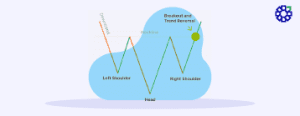How Can I Convert Intraday To Delivery?
- 16th October 2025
- 11:00 AM
- 6 min read
With intraday trading, you can buy and sell securities on the same day. However, although intraday trading focuses on making fast decisions, markets do not always act in the same way.
Consider entering an intraday position and realise that the stock has long-term potential. In this situation, converting intraday to delivery trading can help you save money and open up new opportunities.
This blog explains the overall procedure of converting intraday to delivery positions and highlights the consequences of not exiting from your position.
How to Convert Intraday to Delivery?
You can move from intraday to delivery positions to convert shares and vice versa. To switch your positions, you must utilise your stockbroker’s website or mobile application. Here are the following steps you need to follow:
- Go to your broker’s website or mobile application and sign in to your trading account using appropriate login credentials.
- Go to your portfolio and choose the stocks you want to convert to your position.
- Provide the number of stocks you want to convert.
- Now you will have the option to change your intraday position to delivery or your delivery position to intraday.
- Your conversion of positions will be completed when you choose this option.
Switching positions is easy, and it just takes a few minutes to finish. The following shares will be squared off or converted into delivery shares after the trading session. However, remember that you can only convert intraday stocks on the same day that you buy them.
What are the Margin Requirements for Conversion?
Converting your intraday trading to delivery will charge an extra margin from you. A margin is charged since intraday positions allow you to trade with a narrow margin that does not accurately reflect the entire value of the equities you are buying or selling.
According to the Securities and Exchange Board of India (SEBI), for intraday trading, you need an initial margin which is equal to 50% of the entire amount transacted.
However, things are different when it comes to the delivery trade. In these situations, you have to pay the full buying price of the stocks. The margin is 100% of the initial investment. The difference between the intraday and delivery margins must be paid when converting your intraday position to delivery, which is typically 50%.
For example, suppose you are trading INR 40,000 worth of shares intraday with an INR 20,000 margin. You would have to pay an extra INR 20,000 in margin if you decided to convert these positions to delivery.
Exiting an Intraday Position
You can sell any stock you currently own during market hours without any restrictions. Here are the simple steps:
- Decide which stocks you want to liquidate in your Demat account.
- The option to exit will be available to you. Enter the amount and price of the stocks you want to redeem after selecting the option.
- To finish the intraday deal, select ‘Buy’ or ‘Sell’ depending on your open trading position.
What Happens If You Do Not Exit From Your Position?
When the market closes, all intraday positions should be squared off. Your broker’s automatic system will close your trade for you if you do not. Such an exit entails an extra fee and is referred to as a system square-off.
The fee is determined by your broker’s pricing policies, but it adds to the cost of your portfolio. Therefore, you should be careful to close all active intraday positions before the market closes to prevent paying such extra fees. To stay involved and save fees, turn your stock position into a delivery trade if you do not want to close it.
You can trade on an intraday or delivery basis and alternate between the two, depending on your trading strategy and time horizon. To ensure a seamless conversion, you must be aware of the margin requirements and the conversion procedure.
Benefits of Converting an Intraday Position to Delivery
- If your intraday position does not work for you, you might switch to delivery to save money on bookings.
- By keeping the stock and acquiring more at a lower price when the position is converted to delivery, you can opt to average your purchase cost.
- If your trade ends up losing money, you can switch it from an intraday position to a delivery position during the day. Compared to delivery positions, intraday positions require less margin.
Final Thought
Converting intraday to delivery position provides flexibility and risk control. The procedure enables traders to take advantage of possible market upswings, control losses, and optimise holdings. In addition, the margin requirements and exit position help you to make informed decisions and trade effectively.
However, using a reliable trading app makes switching between various trading techniques easy.
For intraday trading, you can download the PL Capital Group – Prabhudas Lilladher application and open a Demat account. Besides intraday trading, PL enables you to trade, invest, and increase your wealth in US stocks, options, and futures.
Frequently Asked Questions
1. Are there any charges levied for converting intraday to delivery?
Yes, there are intraday to delivery conversion charges. Brokers may charge a small fee for this conversion. For further information, see your broker’s fee structure.
2. Is it possible to convert intraday positions to delivery after market hours?
The broker automatically squares off unconverted intraday positions at the day’s closing time if you do not convert them before the time.
3. What happens if I do not convert my intraday position to a delivery position?
Your broker’s system will automatically square off your intraday position if you do not convert it to a delivery position before the market ends.
4. How is my intraday trade eligible for conversion to delivery?
By paying the entire transaction amount and clicking the option ‘convert to delivery’ on your trading platform before the market’s intraday square-off time, you may convert your intraday trade into a delivery position.





